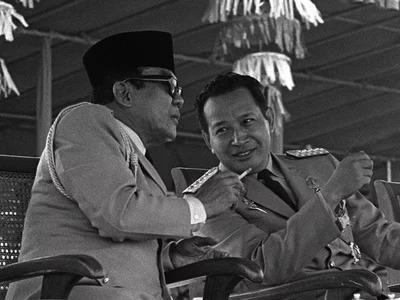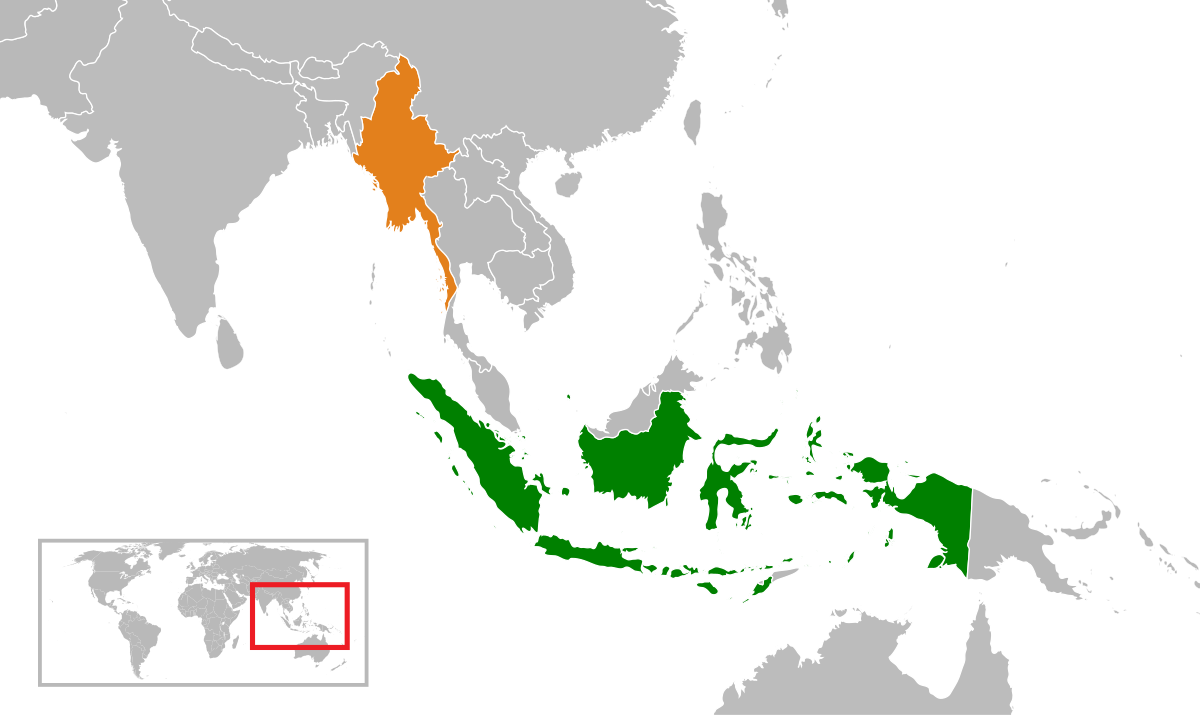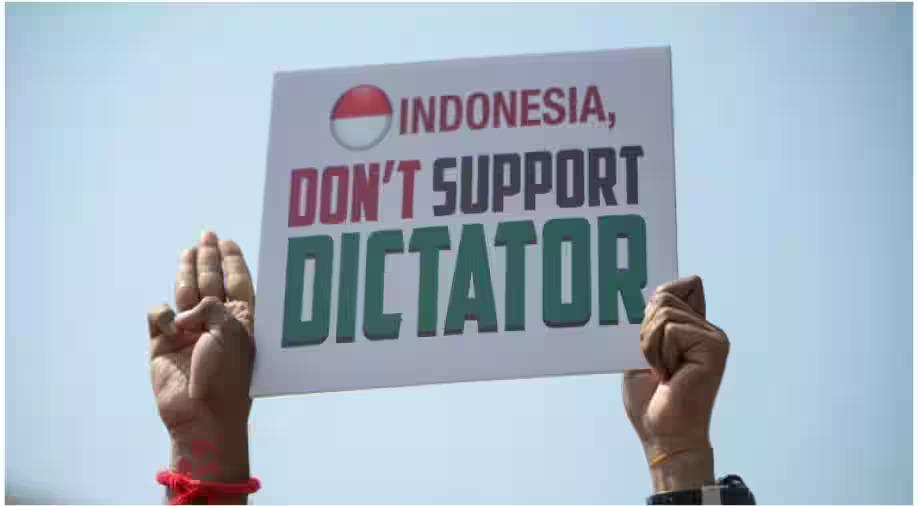Comparing and contrasting the political history of Myanmar and Indonesia since their independence reveals a tale of two Southeast Asian nations with divergent paths but shared themes of struggle, dictatorship, reform, and democratization.
Independence & Immediate after:
Myanmar, formerly known as Burma, gained independence from British colonial rule in 1948. The immediate post-independence period was marked by internal strife, with various ethnic groups and communist insurgents challenging the central government. The situation culminated in a military coup in 1962 led by General Ne Win, who established a military-led socialist state. For nearly five decades, Myanmar experienced stringent military rule characterized by repression, economic mismanagement, and isolation from the international community. The military, or Tatmadaw, remained the central political force despite sporadic uprisings, such as the 1988 pro-democracy protests and the 2007 Saffron Revolution. The introduction of a new constitution in 2008, followed by quasi-civilian rule in 2011, signalled a potential shift towards democratization. However, the transition has been rocky, with the military retaining significant power and influence, culminating in the 2021 coup that ousted the democratically elected government of Aung San Suu Kyi’s National League for Democracy (NLD). Myanmar’s political landscape remains volatile, marked by ongoing ethnic conflicts, human rights abuses, and a tenuous relationship with the international community.

In pic: Indonesian President Sukarno (left) with Gen. Suharto
Indonesia’s journey post-independence offers a contrasting narrative. After declaring independence from Dutch colonial rule in 1945, Indonesia faced a bitter four-year struggle against Dutch attempts to reassert control. The Dutch finally recognized Indonesian sovereignty in 1949. The early years of independence were marked by parliamentary democracy under President Sukarno, a charismatic leader who played a pivotal role in the country’s fight for independence. However, political instability and economic challenges led to Sukarno’s implementation of “Guided Democracy” in 1959, centralizing power and curbing dissent. This era ended dramatically with the attempted coup of 1965, which led to a violent anti-communist purge and the rise of General Suharto. Suharto’s “New Order” regime, lasting from 1966 to 1998, was marked by authoritarian rule, economic growth, and significant human rights violations. Suharto’s fall during the Asian Financial Crisis of 1997-1998 ushered in the Reformasi era, a period of democratic transition characterized by political decentralization, economic recovery, and efforts to address past human rights abuses. Since then, Indonesia has emerged as a stable democracy, holding regular free elections and witnessing peaceful transitions of power.

Authoritarian Rule:
Both Myanmar and Indonesia experienced prolonged periods of military or authoritarian rule following their independence, yet their trajectories diverged significantly in the subsequent decades. In Myanmar, the military has been the dominant force, repeatedly disrupting democratic progress and maintaining control through force and constitutional manipulation. Conversely, Indonesia’s military, while powerful, eventually retreated from direct political control, allowing democratic institutions to take root and flourish. Indonesia’s Reformasi period starkly contrasts with Myanmar’s tumultuous attempts at democratization, highlighting the resilience of Indonesian civil society and political actors in the face of past authoritarianism.

Economic policies under military rule also differed markedly. Myanmar’s adoption of a closed, socialist economy under Ne Win led to economic stagnation and poverty, while Indonesia, under Suharto, embraced a form of state capitalism that spurred significant economic growth despite widespread corruption and cronyism. This economic divergence contributed to different outcomes in terms of social development and international integration, with Indonesia becoming an active member of the international community while Myanmar remained largely isolated until recent years.
Ethnics & Religious tensions:
Ethnic and religious diversity has posed challenges for both nations, yet their approaches have varied. Myanmar’s myriad ethnic groups have long sought autonomy or independence, leading to ongoing civil conflicts. The Rohingya crisis, where the Muslim minority faced brutal persecution and displacement, has drawn international condemnation and highlighted deep-seated ethnic tensions. Indonesia, with its vast archipelago and diverse population, has also faced separatist movements and religious tensions, notably in regions like Aceh and Papua. However, Indonesia’s approach has been more accommodating, with significant autonomy granted to restive regions and efforts to promote national unity through the state ideology of Pancasila, which emphasizes pluralism and tolerance.
Myanmar’s Perpetual Misery
In recent years, the political landscapes of Myanmar and Indonesia continue to reflect their divergent paths. Myanmar’s 2021 coup represents a significant setback in its democratic journey, with the military once again asserting control and facing widespread domestic and international opposition. The humanitarian crisis, particularly concerning the Rohingya, remains unresolved, further complicating Myanmar’s international standing. In contrast, Indonesia has continued to consolidate its democratic institutions, with successive governments focusing on economic development, anti-corruption measures, and maintaining a balance between accommodating regional autonomy and preserving national unity. Indonesia’s role as a leader in ASEAN and its active participation in global forums stand in stark contrast to Myanmar’s pariah status.
While both Myanmar and Indonesia share common themes in their political histories—such as the struggle for independence, military dominance, and the quest for democracy—their trajectories have diverged significantly. Myanmar remains embroiled in conflict and military rule, struggling to establish a stable democratic system, whereas Indonesia has successfully transitioned to a stable democracy, leveraging its economic and political reforms to become a significant player on the global stage. The comparison of these two nations underscores the complexity of post-colonial state-building and the varied paths countries can take in their pursuit of stability, development, and democracy.
Author
-

Vijay Kumar Maidergi is a PhD Scholar in the Department of Politics & International Studies, Pondicherry University.
View all posts




